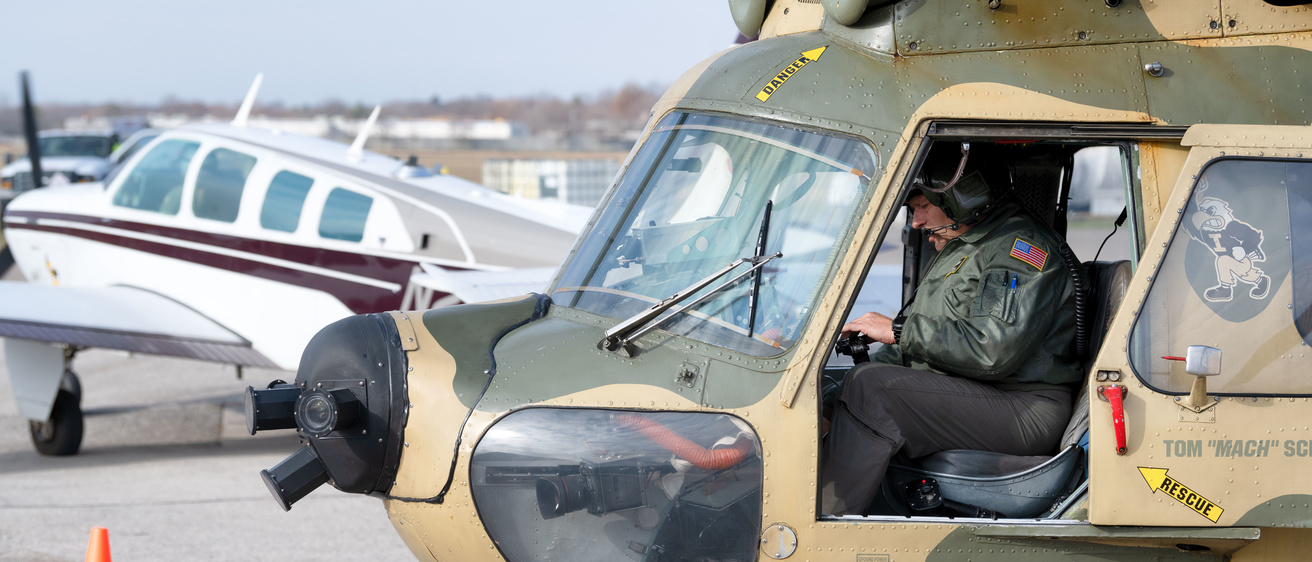University of Iowa's two heavily instrumented Mi-2 Hoplite military helicopters soared into the air in tandem recently as part of a live flight test range demonstration incorporating high-powered night vision cameras mounted on the nose of one of the helicopters.
Quite large, at 4 tons each, Mi-2s were designed to be lightly armed turbine-powered transport helicopters that can also provide close air support. UI’s Operator Performance Laboratory (OPL), based at the Iowa City Municipal Airport, has mounted four cameras to the nose of one of the Mi-2s that together capture 154 degrees of view horizontally and 71 degrees vertically and a total of 9.8 million pixels.
The camouflage-patterned helicopters are part of OPL's fleet of flight-testing aircraft.
This month, OPL, which is a lab at the University of Iowa Technology Institute within the UI College of Engineering, has been working with Collins Aerospace to demonstrate the potential of a suite of equipment that pairs to detect, identify, locate, and report back information about potential threats at various ranges for Joint Forces officials.
OPL’s Beechcraft Bonanza piston engine aircraft, ground command, and the Mi-2s were deployed to showcase the different technologies can work together while maintaining geolocation, data link, and optical imaging capabilities at various distances. The package of systems had not previously been paired and could be used to keep warfighters further from danger.
Learn more about OPL's flight-testing aircraft: Mi-2 and Bonanza
OPL provided test pilots, aircraft, and technical expertise critical to enable successful testing of Collins’ systems. OPL is led by Tom “MACH” Schnell, a professor of systems and industrial engineering and Jim “Max” Gross Chair of Engineering as well as ITI associate director and experimental test pilot.
The suite of equipment developed by Collins included U.S. and Coalition networking, open systems compliant and small form factor radios, radio-frequency (RF) and electro-optical/Infrared (EO/IR) sensors and multi-level secure computing. Multi-level security is relevant when U.S. and coalition partners with a variety of security clearance levels need to communicate on a joint data network.
OPL’s aircraft, flight test infrastructure, and expertise allow companies and government agencies to quickly and inexpensively test new technology early in the development process to troubleshoot and validate requirements before a project enters advanced stages when changes become more expensive to implement. In addition to working with Collins, OPL has been part of the Defense Advanced Research Projects Agency (DARPA) Air Combat Evolution (ACE) team to advance artificial intelligence capabilities that assist fighter pilots.
